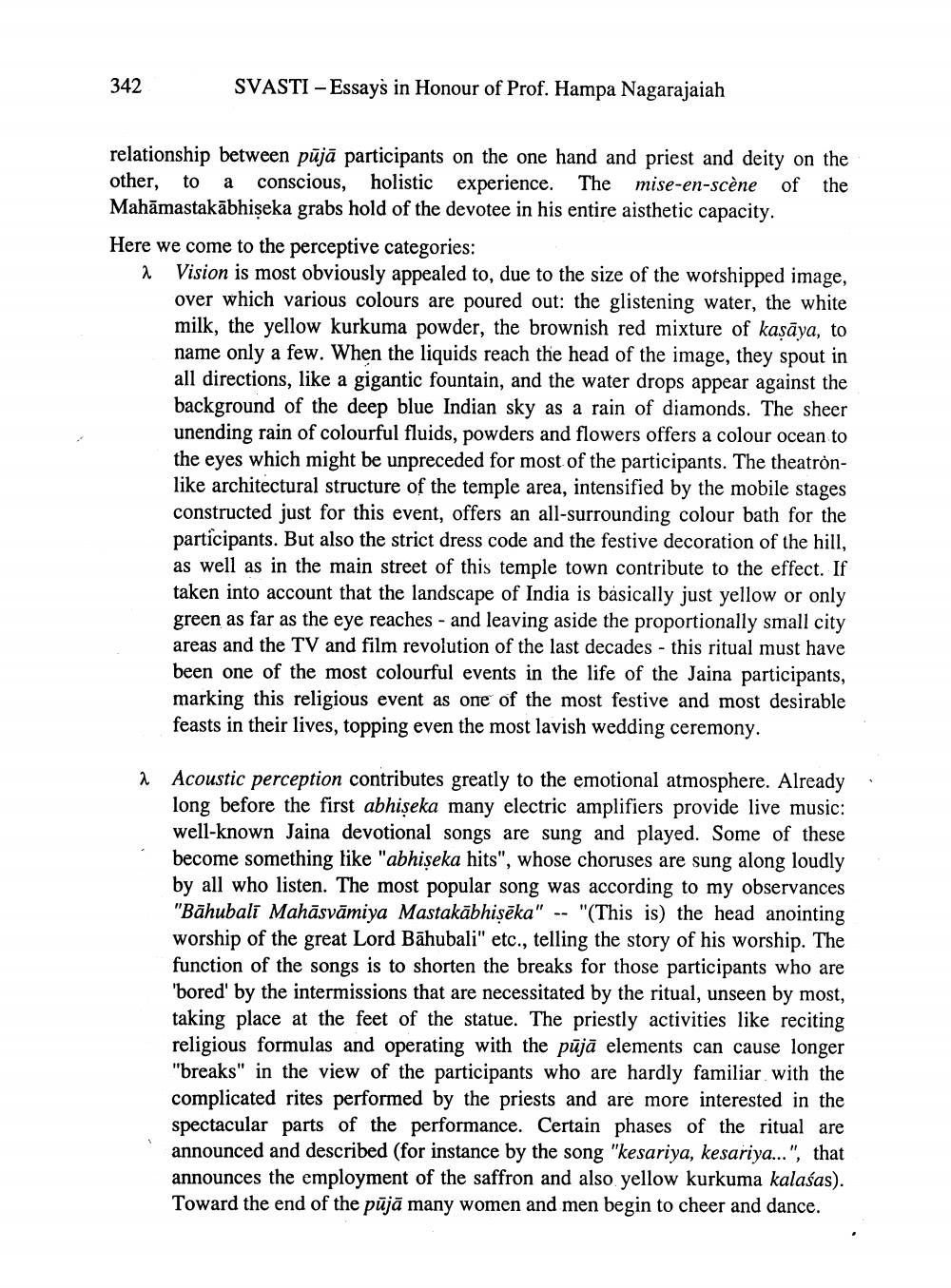________________
342
SVASTI Essays in Honour of Prof. Hampa Nagarajaiah
relationship between puja participants on the one hand and priest and deity on the other, to a conscious, holistic experience. The mise-en-scène of the Mahamastakäbhişeka grabs hold of the devotee in his entire aisthetic capacity.
Here we come to the perceptive categories:
λ Vision is most obviously appealed to, due to the size of the worshipped image, over which various colours are poured out: the glistening water, the white milk, the yellow kurkuma powder, the brownish red mixture of kasaya, to name only a few. When the liquids reach the head of the image, they spout in all directions, like a gigantic fountain, and the water drops appear against the background of the deep blue Indian sky as a rain of diamonds. The sheer unending rain of colourful fluids, powders and flowers offers a colour ocean to the eyes which might be unpreceded for most of the participants. The theatronlike architectural structure of the temple area, intensified by the mobile stages constructed just for this event, offers an all-surrounding colour bath for the partícipants. But also the strict dress code and the festive decoration of the hill, as well as in the main street of this temple town contribute to the effect. If taken into account that the landscape of India is basically just yellow or only green as far as the eye reaches and leaving aside the proportionally small city areas and the TV and film revolution of the last decades this ritual must have been one of the most colourful events in the life of the Jaina participants, marking this religious event as one of the most festive and most desirable feasts in their lives, topping even the most lavish wedding ceremony.
Acoustic perception contributes greatly to the emotional atmosphere. Already long before the first abhiṣeka many electric amplifiers provide live music: well-known Jaina devotional songs are sung and played. Some of these become something like "abhiṣeka hits", whose choruses are sung along loudly by all who listen. The most popular song was according to my observances "Bahubali Mahāsvāmiya Mastakābhiṣēka" "(This is) the head anointing worship of the great Lord Bahubali" etc., telling the story of his worship. The function of the songs is to shorten the breaks for those participants who are 'bored' by the intermissions that are necessitated by the ritual, unseen by most, taking place at the feet of the statue. The priestly activities like reciting religious formulas and operating with the puja elements can cause longer "breaks" in the view of the participants who are hardly familiar with the complicated rites performed by the priests and are more interested in the spectacular parts of the performance. Certain phases of the ritual are announced and described (for instance by the song "kesariya, kesariya...", that announces the employment of the saffron and also yellow kurkuma kalasas). Toward the end of the pajā many women and men begin to cheer and dance.




